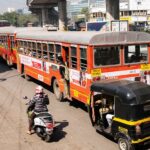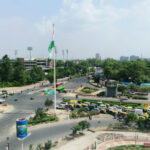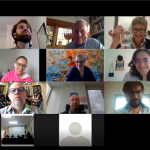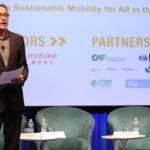Posts tagged with 'capacity building'
The conclusion of the Global Stocktake at COP28 in Dubai, United Arab Emirates this December will evaluate how much progress the international Paris Agreement on climate change has made in the fight against the climate crisis and what more is needed to ...

Indore is known as India’s cleanest city, having secured the title seven years in a row in Swachh Bharat National Cleanliness Surveys, and it is now determined to clean its air too. On February 15, the “Clean Air, Clean Indore” ...

The momentum towards low-carbon and sustainable transport is growing globally, but the sector still lags behind many others and each country faces a unique path to travel. Political landscapes, regulations, industry interests, market set-ups, financial resources and social considerations all ...

From a road safety standpoint, intersections are one of the most critical parts of a city’s streetscape and transportation network. In most cities, they account for the highest number of interactions between vehicles and pedestrians. To increase safety at one ...

We now have less than seven years to cut emissions in half in order to keep global warming below 1.5 degrees C, the limit scientists say is necessary for averting some of the most dangerous climate impacts. 2022 saw flooding, drought and severe ...

To achieve more equitable, resilient, low-carbon societies, cities need big changes to critical infrastructure and systems. But ample research shows they can’t raise the investment needed for those big changes on their own. Municipalities depend on higher levels of government ...

This is part three in a series on capacity development for city leaders. The first two posts in this series discussed how effective capacity development should be rooted in the immediate needs and mandates of all stakeholders, and how collective action must ...

This is part two in a series on capacity development for city leaders. As the global urban population continues to grow rapidly, cities are being tasked with addressing a variety of needs – economic, social, political, environmental – with very ...

This is the first entry in a series on capacity development for city leaders. By 2050, the global urban population is expected to grow by 2.5 billion people, continuing a decades-long trend of urbanization. And as the number of people ...

The COVID-19 pandemic did not break the world, but rather revealed a world already broken. COVID-19 and the climate crisis exposed the fragility of economies and societies, upending the lives of people worldwide and, in particular, harming vulnerable communities and countries already facing ...

Around the world, communities of color and marginalized groups disproportionately feel the effects of pollution and other environmental impacts. Whether it’s residents living along the polluted Cooum River in Chennai, India; Louisiana’s petrochemical-dense Cancer Alley; Thailand’s toxic hot spot Map Ta Phut Industrial ...

It has been a tumultuous time for the UN climate talks. The mass protests against social inequality in Chile prompted the country to give up its plan to host COP25 just a month before the annual talks were scheduled to begin in December. But ...

Cities around the world face a crush of converging pressures. They are being asked to improve mobility, affordable housing, equity, and access to opportunity – all while accommodating more residents, reducing greenhouse gas emissions and making their streets safer and ...

Beyond the technological revolution underway in transport today, gender was an underlying theme of Transforming Transportation this year. Transport is not gender neutral, not matter where you are, said a chorus of experts during the opening panel on day two. “Gender is often a more robust determinant of modal choice than ...

Due to climate change, hundreds of millions of people in urban areas across the world will be exposed to rising sea levels, greater inland flooding, more frequent and intense storms, and regular periods of both extreme heat and cold in ...




























